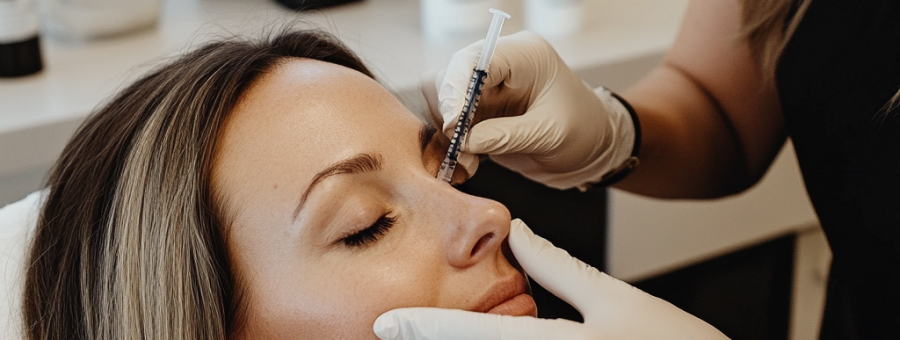Home / Injection & Fillers / PRP (Platelet Rich Plasma)

PRP (Platelet Rich Plasma)
PRP (Platelet Rich Plasma) is a natural treatment that uses your own blood’s growth factors to rejuvenate skin, stimulate hair growth, and enhance healing. This minimally invasive procedure helps reduce fine lines, improve skin texture, and restore thinning hair without chemicals or surgery. PRP delivers gradual, natural-looking improvements with little downtime.
How PRP (Platelet Rich Plasma) Works for Your Unique Needs
A small amount of your blood is processed to isolate the plasma, then precisely injected into areas needing renewal for results tailored to your goals.


Ideal For:
- Skin texture
- Hair thinning
- Natural renewal
Does Not Treat:
- Deep wrinkles
- Severe hair loss
- Permanent results
- Medical conditions

Natural rejuvenation
Uses your own platelets to boost healing and renewal.

Improves skin texture
Reduces fine lines, acne scars, and uneven skin.

Stimulates hair growth
Encourages new hair in thinning or balding areas.

Minimal downtime
Most clients resume activities quickly after treatment.

Safe and gentle
No synthetic chemicals or foreign substances.

Versatile treatment
Can be used on face, scalp, and other areas.
The PRP (Platelet Rich Plasma) in action.
A small sample of your blood is drawn and spun in a centrifuge to separate the platelet-rich plasma. The plasma is then gently injected or applied to target areas, harnessing your body’s own healing power for visible improvements.
"I was amazed at how much smoother my skin looked after PRP! The treatment was simple, and my hair feels fuller too. The staff made the whole process comfortable and easy."
Frequently Asked Questions
1. How long does a PRP session take?
A typical session lasts about 45–60 minutes.
2. Is PRP safe?
Yes, because it uses your own blood, risk of allergic reaction is extremely low.
3. When will I see results?
Most people notice improvement in skin or hair within a few weeks, with best results after a series of treatments.
4. Does PRP hurt?
Mild discomfort may occur, but numbing is available for comfort.
5. How many sessions do I need?
A series of 3–4 treatments is often recommended for best results.
6. Who should avoid PRP?
Those with certain blood disorders, active infections, or who are pregnant should not undergo PRP.
Need Help Choosing?
